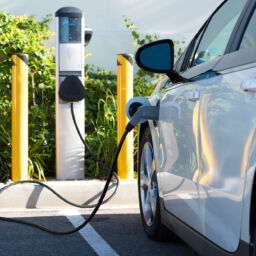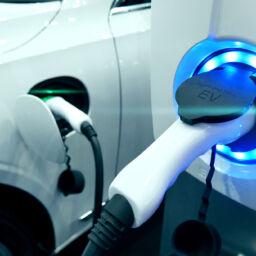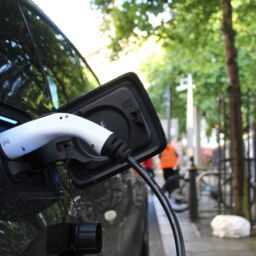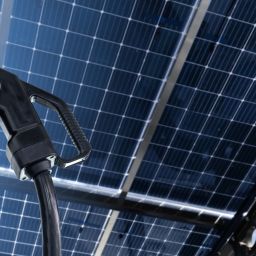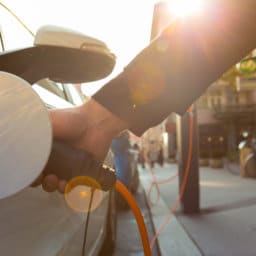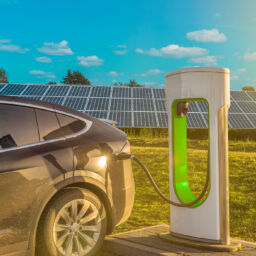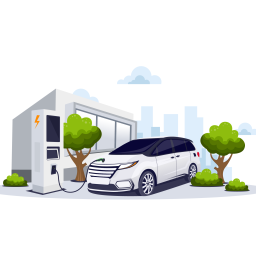 In a previous article on this subject, we discussed how rapidly Electric Vehicles (EVs) are being released into the market and how strong the demand for them has become over the past several years. Ford, in particular, released their new Mustang Mach-E cross-over late last year, and due to demand, currently has a backlog of 3-5 months. Additionally, Ford just announced its new F-150 Lightning full-sized pickup, which is the first mass market electric truck released into the U.S. To put this release into perspective, here are some things to note about the Ford F-150:
In a previous article on this subject, we discussed how rapidly Electric Vehicles (EVs) are being released into the market and how strong the demand for them has become over the past several years. Ford, in particular, released their new Mustang Mach-E cross-over late last year, and due to demand, currently has a backlog of 3-5 months. Additionally, Ford just announced its new F-150 Lightning full-sized pickup, which is the first mass market electric truck released into the U.S. To put this release into perspective, here are some things to note about the Ford F-150:
- The F-150 is the most popular consumer vehicle sold in the U.S., selling 896,000 units in 2020, and in previous years has exceeded sales of over 1 million units. To put this into perspective, the next closest competitor is the Dodge Ram Pickup which sold 633,000 units.
- 1 out of every 30 cars sold in the U.S. is an F-150
- Ford sells $42 billion worth of F-150’s each year
- Within just 48 hours of the announcement of the new electric F-150, Ford took 44,500 orders for the vehicle, which is more than 5% of their typical annual sales volume. To date, Ford has taken more than 100,000 pre-orders for this vehicle
If the general populace can embrace such an iconic American vehicle in a fully electric package, it may catalyze a tidal shift in American thinking and increase the speed of adoption of EVs across the country.
In a previous article, we discussed the shift away from internal combustion engines and how long this might take. This article will cover how the new onslaught of EVs will likely get charged based on currently available technology. The first item to note is that most people who purchase electric vehicles plan on charging them at home using either a Level 1 or a Level II charging system. Here is a quick breakdown of the difference between the different Level ratings for EV chargers:
- Level 1 Charger – 120V – max charging capacity 2 kW
- Level 2 Charger – 240V – max charging capacity 12 kW
- Level 3 Charger – 480V – max charging capacity 400 kW
Level 1 chargers are rarely used anymore because they are too slow. Most people install Level II chargers for home use. Level II home chargers run between $400-700 for the equipment, with an additional $200-500 required for the installation if it is hard-wired. Many of the new home versions can simply be plugged into an existing 240V outlet, so if a homeowner already has one of these, they only need to purchase the equipment. Many utilities are beginning to offer incentives for installing EV chargers, so people should look into these as the rebates can be significant.
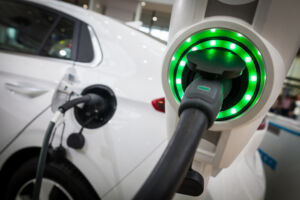 So, what does owning a home EV charger offer to a homeowner in terms of charging capacity? Current Level II EV chargers range from 30-50 amps, which means they can provide between 6-12 kWh of charging capacity per hour. A typical EV with a 300-mile range has a total battery storage capacity of about 100 kWh (standard EVs can go about 3 miles/kWh). Therefore, if your EV were close to empty, and you needed to charge the full 100 kWh battery capacity, with the best Level II charger on the market you would be waiting about 8-9 hours to accomplish this. This is fine if you can plug your vehicle in overnight, and indeed, this is what the vast majority of EV owners currently do. If you are going on a long trip, however, and will be away from home for a while, your home charger isn’t an option. What if you failed to charge up the night before and have a medium to long distance trip the next day? What if you didn’t start with a full charge and had to run a bunch of errands? We can all think of many different scenarios where charging your EV at home becomes difficult, if not impossible. So, what types of public charging options are currently available?
So, what does owning a home EV charger offer to a homeowner in terms of charging capacity? Current Level II EV chargers range from 30-50 amps, which means they can provide between 6-12 kWh of charging capacity per hour. A typical EV with a 300-mile range has a total battery storage capacity of about 100 kWh (standard EVs can go about 3 miles/kWh). Therefore, if your EV were close to empty, and you needed to charge the full 100 kWh battery capacity, with the best Level II charger on the market you would be waiting about 8-9 hours to accomplish this. This is fine if you can plug your vehicle in overnight, and indeed, this is what the vast majority of EV owners currently do. If you are going on a long trip, however, and will be away from home for a while, your home charger isn’t an option. What if you failed to charge up the night before and have a medium to long distance trip the next day? What if you didn’t start with a full charge and had to run a bunch of errands? We can all think of many different scenarios where charging your EV at home becomes difficult, if not impossible. So, what types of public charging options are currently available?
There are currently about 41,000 EV charging stations in the U.S. Approximately 90% of these are still Level II chargers. If you have a newer EV with a high battery storage capacity (75kWh or greater), then a 7-10 kW charger will take a very long time to charge your car (7-10 hours). If you are charging your vehicle at work, perhaps this could make sense, but if you are running errands or on a long trip, Level II chargers will not meet your needs. Level III chargers, by way of comparison, are much more powerful. Typical Level III chargers produce 75-150 kW and can charge most EVs in under an hour. If you only need to top off the batteries or add another 100 miles in range to get you home, you may only need to charge for 15-30 minutes. These types of time frames are much more realistic for average consumers. In addition, if the Level III charger is somewhere that a consumer wouldn’t mind spending 30 minutes, such as a coffee shop, a restaurant, or a store, then they may be able to kill two birds with one stone. Additionally, the business owner in this scenario would likely gain new customers that would need to stay at their facility for an extended period of time. It’s a win-win for both parties.
 Level III charges will rapidly supplant the current Level II EV Charging infrastructure in the next 5-10 years. However, Level III chargers are more expensive than Level II chargers, so property owners must be conscious of this fact. The good news is that there are now financing mechanisms that allow facility owners to step into short term lease contracts (typically ten years) where the facility owner pays no money out of pocket, receives either a site lease payment or a revenue sharing agreement, and gains a valuable amenity for their customers. You can visit our EV charging page if you are interested in learning more about EV Charger financing or fill out our registration form to book a personal call with one of our representatives.
Level III charges will rapidly supplant the current Level II EV Charging infrastructure in the next 5-10 years. However, Level III chargers are more expensive than Level II chargers, so property owners must be conscious of this fact. The good news is that there are now financing mechanisms that allow facility owners to step into short term lease contracts (typically ten years) where the facility owner pays no money out of pocket, receives either a site lease payment or a revenue sharing agreement, and gains a valuable amenity for their customers. You can visit our EV charging page if you are interested in learning more about EV Charger financing or fill out our registration form to book a personal call with one of our representatives.
Level III charging is the future, and it will allow EV’s to replace the majority of internal combustion engine vehicles on the road today. Because there are so few Level III chargers available today, they will be in very high demand for the next several years, so property owners that act now will get a substantial first-mover advantage. One thing is for sure, the future of EVs and EV charging will be very bright indeed.


